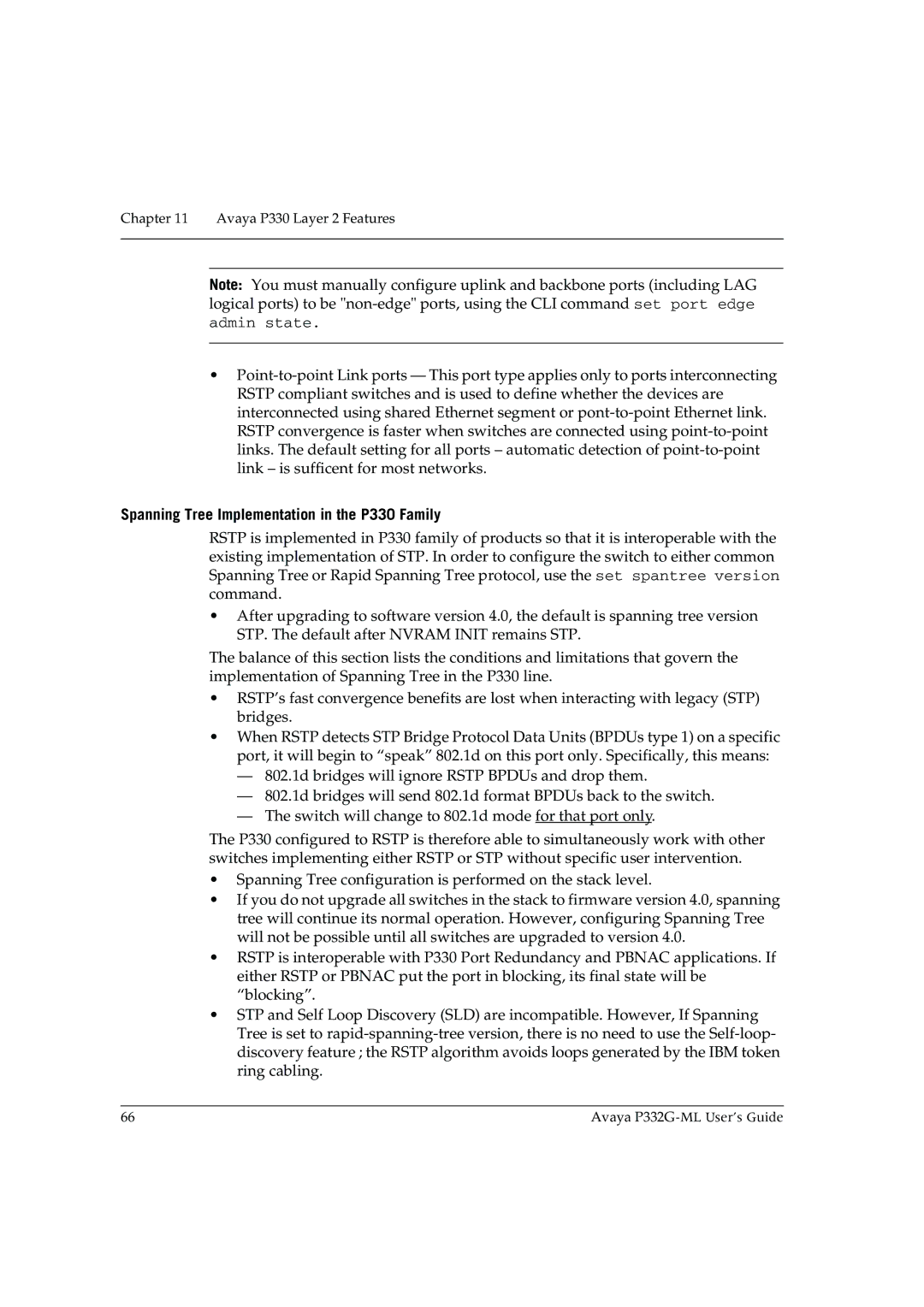
Chapter 11 Avaya P330 Layer 2 Features
Note: You must manually configure uplink and backbone ports (including LAG logical ports) to be
admin state.
•
Spanning Tree Implementation in the P330 Family
RSTP is implemented in P330 family of products so that it is interoperable with the existing implementation of STP. In order to configure the switch to either common Spanning Tree or Rapid Spanning Tree protocol, use the set spantree version command.
•After upgrading to software version 4.0, the default is spanning tree version STP. The default after NVRAM INIT remains STP.
The balance of this section lists the conditions and limitations that govern the implementation of Spanning Tree in the P330 line.
•RSTP’s fast convergence benefits are lost when interacting with legacy (STP) bridges.
•When RSTP detects STP Bridge Protocol Data Units (BPDUs type 1) on a specific port, it will begin to “speak” 802.1d on this port only. Specifically, this means:
—802.1d bridges will ignore RSTP BPDUs and drop them.
—802.1d bridges will send 802.1d format BPDUs back to the switch.
—The switch will change to 802.1d mode for that port only.
The P330 configured to RSTP is therefore able to simultaneously work with other switches implementing either RSTP or STP without specific user intervention.
•Spanning Tree configuration is performed on the stack level.
•If you do not upgrade all switches in the stack to firmware version 4.0, spanning tree will continue its normal operation. However, configuring Spanning Tree will not be possible until all switches are upgraded to version 4.0.
•RSTP is interoperable with P330 Port Redundancy and PBNAC applications. If either RSTP or PBNAC put the port in blocking, its final state will be “blocking”.
•STP and Self Loop Discovery (SLD) are incompatible. However, If Spanning Tree is set to
66 | Avaya |
